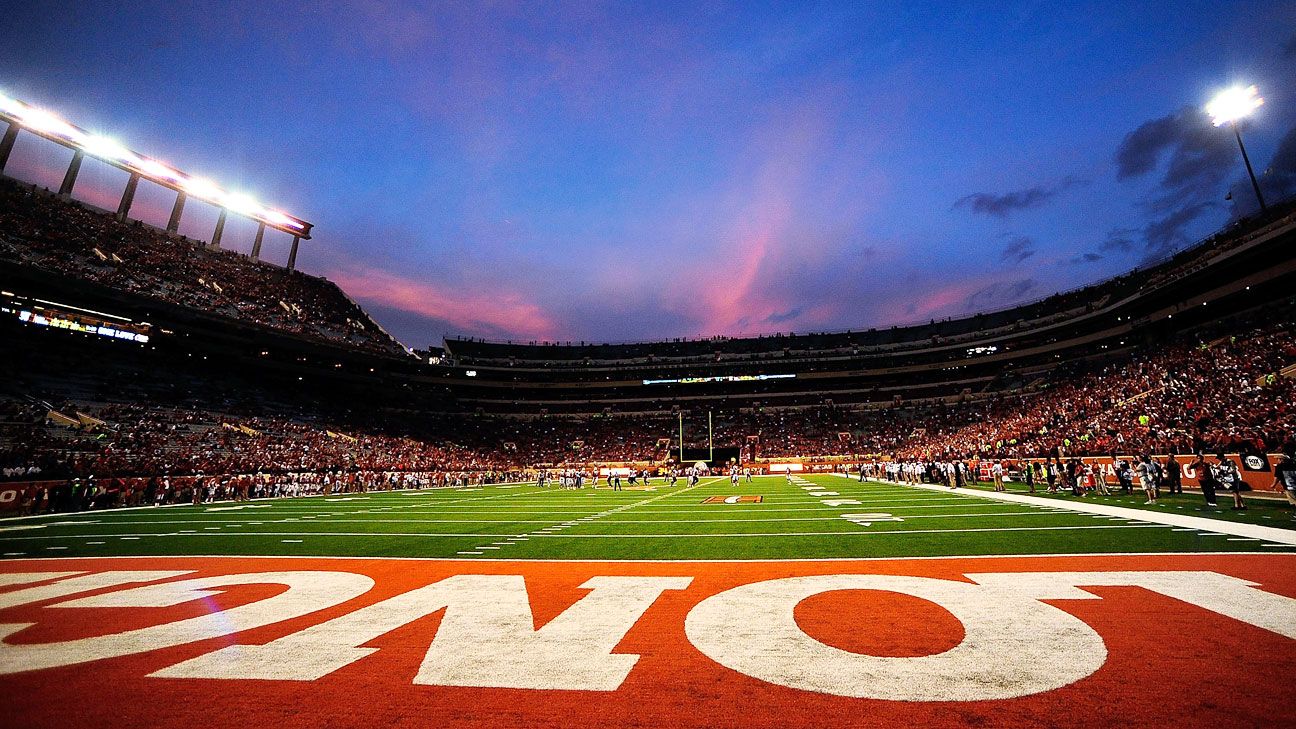A month after Texas football players requested a list of changes be made on campus, Texas has responded with to a sweeping plan to “redefine campus symbolism,” including the renaming of Texas’ football field for Earl Campbell and Ricky Williams and a statue for Texas’ first Black football letterman.
On June 12, Longhorns players released a statement requesting the removal of “The Eyes of Texas” as the school song, the renaming of four campus buildings that are named after Confederate or racist figures, more diverse statues by people of color, a permanent Black athletic history in the school’s athletics Hall of Honor and the renaming of part of Darrell K Royal-Texas Memorial Stadium after Julius Whittier, who in 1970 became the first Black player to letter for the Longhorns.
On Monday, Texas interim president Jay Hartzell announced a set of diversity initiatives that included “reconsidering how to best reflect the university’s values, both in the symbols and names on campus and in the openness with which UT tells its history.”
“The Eyes of Texas,” sung before and after every football game, will remain. But the school said it will teach about its origins, which were in a minstrel show featuring performers in blackface in 1903, hoping “to reclaim and redefine what this song stands for, first by owning and acknowledging its history in a way that is open and transparent.”
At Darrell K Royal-Texas Memorial Stadium, Texas will erect a statue of Whittier. It will also rename Joe Jamail Field at the stadium in honor of Texas’ two Heisman Trophy winners, Campbell and Williams, at the request of the family of the late Jamail, a prominent Texas booster.
“For countless days as young football players and upon being inducted to the Hall of Fame, Ricky and I have stood on this iconic field for many important points of our lives,” Campbell said in a joint statement with Williams. “We never would have envisioned this historic site would one day bear our names. The symbolism of this honor transcends the recognition of the Heisman Trophies we received. It extends to all students, but specifically black athletes, who continue to work to define our collective motto ‘Winning with Integrity.’ Ricky and I are humbled by this honor.”
Williams added that he hopes the name change will be part of an ongoing commitment to diverse representation at Texas.
“Earl and myself are honored to be part of the momentum of change sweeping our alma mater, the University of Texas, the nation, and the world,” Williams said. “We recognize the naming of Campbell/Williams Field is a historic moment and we urge our nation’s universities and communities to continue to reflect and review the history, symbolism, and identities that we place on monuments, public institutions, and sports organizations. A new consciousness is rising and we are honored to be a part of it.”
The school addressed many of the football players’ requests in the June statement directly.
“During the past month, I have listened to scores of students,” Hartzell said. “I went into these conversations understanding that UT has worked hard to become a more diverse and welcoming place. I came out of them realizing there is still more work to do — and this starts and ends by creating an environment in which students are fully supported before, during and after their time at UT.”
The players included a demand to rename several campus buildings named for Confederate or racist figures, including:
• Robert Lee Moore Hall, named for a mathematics professor known for not allowing Black students to take his classes. The university said it will be renamed.
• T.S. Painter Hall, named for Theophilus Paintery, who served as UT president from 1944 to 1952 and was noted for denying entrance to the Texas law school for Heman M. Sweatt, a Black student who met every requirement for admission except race. The decision led to a lawsuit, Sweatt v. Painter, which ultimately led to a Supreme Court case that forced the school’s admission of Black students in 1950. The school said it will honor Sweatt, UT’s first Black student, with the Heman M. Sweatt Entrance to T.S. Painter Hall, and will place a statue of Sweatt near the entrance. It will also devote space in the building to an exhibit that will tell the story of Sweatt’s court case.
• Littlefield Hall, built by UT president George W. Littlefield, who was a Confederate Army officer, and James Hogg Hall, named for a Texas governor whose legacy included signing some of the state’s first Jim Crow laws. These buildings were included as part of a new plan to educate visitors on the history and context of names on campus.
The athletes also requested inclusion of programs for incoming freshmen discussing the history of racism on campus, and an outreach program for cities such as Austin, Dallas, Houston and San Antonio, along with .5 percent of athletics revenue donated to Black organizations and the Black Lives Matter movement.
The school addressed each of these, saying it would be allocating a “multimillion-dollar investment from Texas Athletics’ revenue” to programs that work to recruit, attract, retain and support Black students, and said it will expand UT’s presence and outreach in Dallas, Houston, San Antonio and elsewhere.
The school said the timeline for the changes will be released in the future as each project begins.
